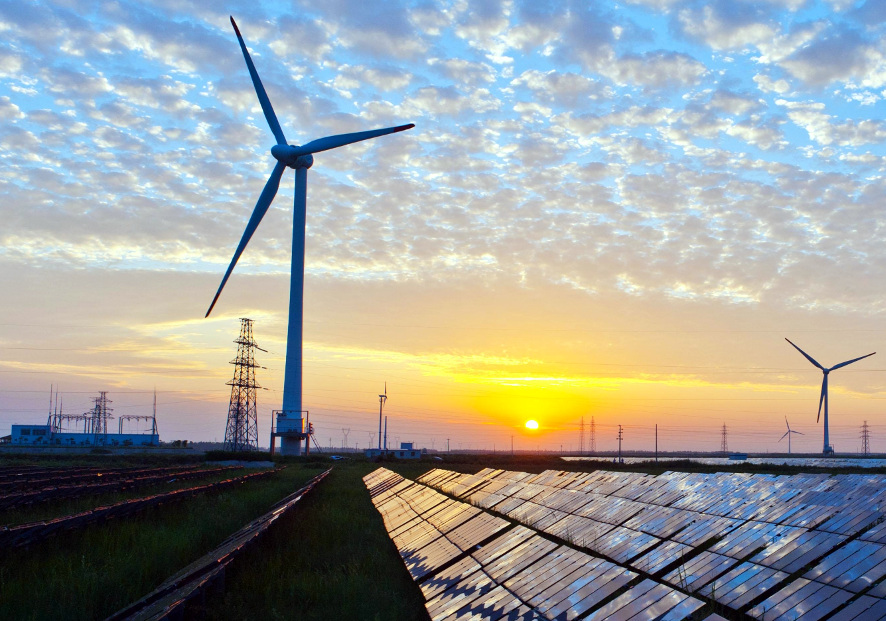As part of its plans to future-proof its 100% renewables target, the Australian Capital Territory (ACT) Government has announced it is extending its series of reverse auctions. In an official statement released on Thursday, the government said it would contract for the construction of up to 250 MW of new renewable energy generation alongside 20 MW/40MWh of battery storage.
The move follows the passing of legislation earlier this year to guarantee the ACT will maintain 100% renewable electricity into the future in the face of growing electricity needs as its economy and population expand. The announcement comes as renewable energy investment in Australia slows down amid policy uncertainty and mounting regulatory challenges, risking rises in power prices and future energy reliability.
“In the ACT we’re committed to climate change action, and we’re planning ahead to ensure we only use renewable electricity. The renewables auction will also allow the ACT to further develop our renewable energy industry, expand our economy and job growth, and provide significant boosts in local investments,” Minister for Climate Change and Sustainability Shane Rattenbury said.
In 2016, the ACT Government legislated a target of sourcing 100% renewable electricity by 2020—from within the ACT or across the National Electricity Market (NEM). The major initiatives the Territory has taken thus far include: a PV feed-in tariff scheme that operated between 2009 and 2011, a 40 MW large-scale solar auction held in 2012 and 2013, two 200 MW wind auctions held in 2014 and 2015, a 1 MW community solar scheme that opened for proposals in 2015 and the 200 MW Next Generation Renewables auction awarded in 2016.
Thus far, the Territory’s reverse auction scheme has paved the way to 640 MW of wind and solar across 10 large-scale projects and already leveraged more than $2 billion of investment around Australia, and more than $500 million in the ACT. The output from the two wind farms contracted in 2016 – the 91 MW Crookwell 2 Wind Farm developed by Union Fenosa Wind Australia in New South Wales and the 109 MW Hornsdale Wind Farm Stage 3 developed by Neoen and Megawatt Capital in South Australia – is calculated to be the final renewable electricity needed to meet the ACT’s 100%-by-2020 renewable electricity target and 40% reduction on 1990 level 2020 greenhouse gas emission target. This is expected to happen next month when Horsdale 3 starts to dispatch clean energy under the contract.
“We’ll soon reach 100% renewable electricity in the ACT, which is a great achievement. But our city will keep growing, and we’ll be transitioning buildings and vehicles to be all electric. This is expected to increase electricity consumption, so we’re contracting more renewable electricity generation to ensure we stay at 100%,” Rattenbury said.
Grid-scale storage is the newcomer to the ACT reverse auction scheme. The government said the 20MW/40 MWh battery will be located in the ACT and be capable of powering 25,000 average households for two hours. “It will also support the ACT electricity grid, helping to manage fluctuations in grid voltage and frequency, remove the need to upgrade network infrastructure, store excess electricity from renewable electricity sources, and provide power to help avoid blackouts during periods of high demand and when large fossil fuel generators fail in heatwave conditions,” the minister said.
The ACT series of auction has been very successful in setting record low prices for renewable energy in Australia. In 2016, it set a benchmark price with $73/MWh for the Hornsdale Wind Farm, fixed for 20-years. The program has also delivered over $500 million in local economic benefits and seen four national and international wind companies establish their headquarters in Canberra. The auctions have also leveraged investment in a residential battery storage subsidy package and paved the way for a hydrogen trial. But more big announcements are yet to come.
“In days to come, I look forward to announcing the next major phase of climate action in the ACT. The strategy will outline how we move to renewable energy solutions and what will drive the decarbonisation of the region up to 2025 and beyond,” Rattenbury said.
This content is protected by copyright and may not be reused. If you want to cooperate with us and would like to reuse some of our content, please contact: editors@pv-magazine.com.









By submitting this form you agree to pv magazine using your data for the purposes of publishing your comment.
Your personal data will only be disclosed or otherwise transmitted to third parties for the purposes of spam filtering or if this is necessary for technical maintenance of the website. Any other transfer to third parties will not take place unless this is justified on the basis of applicable data protection regulations or if pv magazine is legally obliged to do so.
You may revoke this consent at any time with effect for the future, in which case your personal data will be deleted immediately. Otherwise, your data will be deleted if pv magazine has processed your request or the purpose of data storage is fulfilled.
Further information on data privacy can be found in our Data Protection Policy.